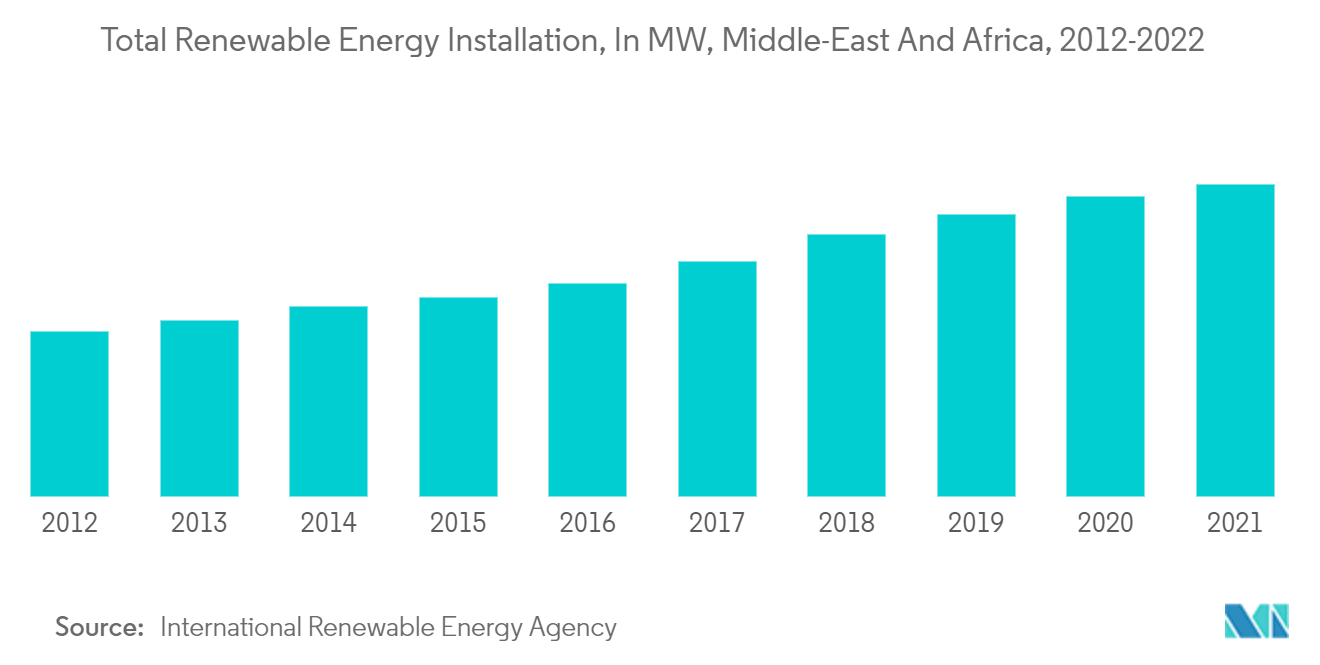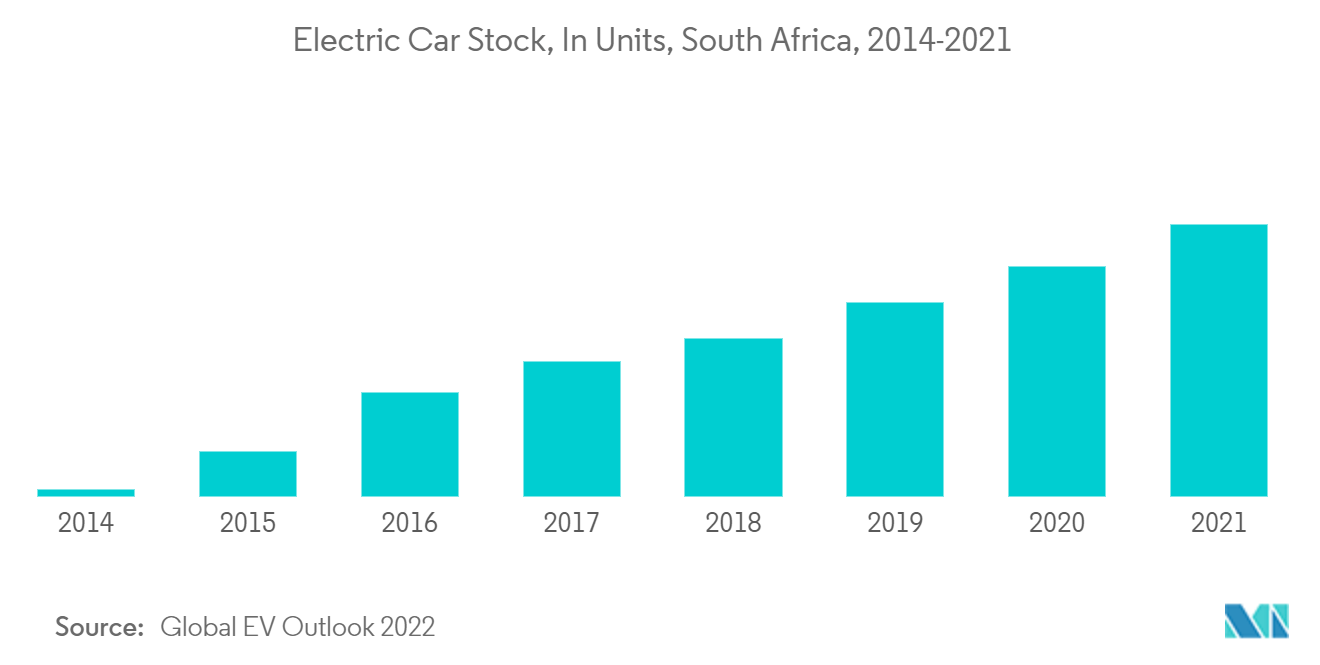Market Trends of Middle-East and Africa Battery Cell Industry
This section covers the major market trends shaping the MEA Battery Cell Market according to our research experts:
Rising renewable Energy Generation
- Over the last decade, the renewable energy installed capacity and generation have been rising steadily in the Middle East and Africa. As renewable resources such as solar and wind generate power intermittently and at various levels, storing this energy later during peak demand is vital. Due to this, modern energy-storing systems are becoming an indispensable part of renewable energy projects.
- Traditionally, pumped storage systems are the most widely-used energy storage technology utilized globally. However, due to the geographical limitations of pumped hydro storage, large land footprint, and declining battery costs, battery energy storage systems have become increasingly popular for energy storage generated from renewable energy sources.
- Various governments across the Middle East and Africa are heavily investing in renewable energy projects to achieve net-zero emissions by 2050. For instance, according to the International Renewable Energy Agency (IRENA), United Arab Emirates is expected to install more than 18 GW of solar energy by 2030, which, in turn, is expected to drive the demand for smart grid networks as it is essential to integrate the renewable power sources, thus, creating vast opportunities for battery cell market players in the future.
- The Saudi Arabian government is significantly investing in renewable energy projects, and the government aims to generate 50% of its energy from renewable sources by 2030. Furthermore, Under Vision 2030, the country is projected to produce 27.3 GW of renewable energy by 2024 and 58.7 GW by 2030. To achieve these renewable energy targets government is working on around 13 renewable energy projects in the country. The projects have a total capacity of 4,870 MW, a solar PV capacity of 4,470 MW and wind at 400 MW. These projects are expected to be commercial by 2024. Thus, such government initiatives are likely to drive the demand for cylindrical and prismatic battery cells during the forecast period.
- Egypt is considered the most favourable African country for renewable energy project development and investment due to ideal conditions for solar energy projects in the country. In 2021, Egypt received a significant amount of foreign direct investments. Egypt's new renewable energy projects rose to USD 3.5 billion in 2021, double the registered value in 2020, with an electricity production capacity of about 3,570 MW. Furthermore, in December 2021, United Arab Emirates-based company Alnowais investment is to invest USD 1 billion in two clean energy projects in Egypt. The projects are expected to be in operation by 2025.
- All these initiatives taken by the governments in the Middle East and Africa are expected to witness a significant rise in demand for energy-storing systems, propelling the battery cell market during the forecast period.

South Africa Dominate the market
- According to the University of Oxford's Environment Change Institute study, in January 2022, South Africa has been identified as the most favourable African country for renewable energy project development and investments. The study states that strategic investments in solar and wind are crucial to ensuring energy security and sustainability across Africa.
- Due to this favourable condition for solar and wind energy projects, many countries are investing in renewable energy projects. For instance, in November 2021, the United States, United Kingdom, France, Germany, and the European Union agreed on a multi-billion-dollar partnership to help South Africa finance a quicker transition from coal to renewable energy. The initiative was valued at USD 8.5 billion.
- Furthermore, on 23rd March 2022, Norway and United Kingdom are also investing USD 39 Million in South Africa's Renewable Energy. This investment would help company H1 Capital build 2,400 MW of new wind and solar plants.
- The government of South Africa approved the Integrated Resource Plan (IRP) 2019, which aims to increase the renewable energy share in the total energy mix. By 2030, the country aims for an additional capacity of 14.4 GW of wind power, 6 GW of solar, 3 GW of gas, 2.5 GW of hydropower, 2.088 GW of storage, including battery energy storage systems, and 1.5 GW of coal.
- In June 2021, Eskom, South Africa's leading utility company and biggest greenhouse gas emitter, is planning to invest USD 10 billion in renewable energy projects and is expected to close its majority of coal-fired power stations by 2050. The company generates more than 90% of South Africa's electricity and aims to invest more in solar energy projects to achieve countries' net-zero emissions by 2050.
- The South African government is promoting electric vehicles. EV sales in 2021 were 1,739, which is more than 18% compared to the 2020 EV sales. The rise in auto sales can be ascribed to the South African government's support, such as incentive schemes and subsidies to manufacturers and buyers, which aims to boost exports of vehicles and components with a new focus on electric vehicles.
- Thus, these initiatives from the government are likely to witness an increase in investment in EVs and renewable energy, which would likely drive the battery cell market in South Africa during the forecast period.


